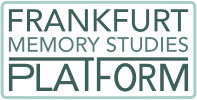Zwischen Nation und Europa. Nationalmuseen als Europamedien
Europa ist in der Krise. Angesichts Brexit, dringender Flüchtlings- und Einwanderungsfragen, Diskussionen über den Ausschluss insolventer Länder und dem demokratischen Defizit der EU ist dieser Befund zu einem Allgemeinplatz geworden. Als einen Weg aus der Krise schlagen Politiker_innen, EU-Beamt_innen und Intellektuelle oftmals die Stärkung des Zusammenhalts durch die Rückbesinnung auf die angenommene gemeinsame Geschichte Europas und eine daraus erwachsene kulturelle Identität vor.
Dieser Herausforderung stellen sich zunehmend auch aktuelle Nationalmuseen in Europa, indem sie es sich zur Aufgabe machen, sich zu europäisieren: sie setzen es sich zum Ziel, nicht mehr nur die Nation und ihre Geschichte, sondern Europa und europäische Geschichte zu zeigen.
Diese „Museen zwischen Nation und Europa“ untersucht das Buch aus medienwissenschaftlicher Perspektive. Anhand dreier aktueller Fallstudien aus Deutschland, Polen und Frankreich geht es den Fragen nach, wie diese Museen Europa und seine Geschichte konstruieren, und was Europa und europäisch in ihren musealen Inszenierungen bedeuten. Welche Vorstellungen Europas bringen die Medien der Ausstellungen hervor? Wen und was zeigen sie als europäisch, wer gehört dagegen in den musealen Inszenierungen nicht zu Europa?
Die Studie zeigt, dass die Europäisierung nationaler Museen auf starke nationale und strukturelle Widerstände stößt. Ein gesamteuropäisches Narrativ Europas und seiner Geschichte ist deshalb bislang nicht in Sicht.
Das Buch erscheint im Frühjahr 2019 bei de Gruyter.
“Between the Nation and Europe. National Museums as Europoeic Media
In times of several EU crises, of discussions about the exclusion of insolvent countries from the economic and monetary union, of searching for “European values” in context of the “refugee crisis”, and of complaints of politicians about the “democratic deficit” of the EU which are uttered almost on a daily basis, intellectuals, researchers, and EU officials are more than ever emphasizing Europe’s cultural identity and unity, which are often perceived as the groundwork of a new, stronger Europe. In the concepts of a common European culture and identity, historiography plays a crucial role: viewed, in a wider sense, as a media practice which not only includes works of academic historians, but also popular formats such as TV series (“Histotainment”), movies, monuments, historical textbooks, museums, etc., historiography is tied closely to the concept of the “imagined community” of the nation until this very day.
Writing history in a context broader than the national one, is one of the most challenging tasks not only for the historical sciences, but also for contemporary European history museums on which the dissertation concentrates. The permanent exhibitions of three selected national history museums in Poland, Germany, and France form the corpus of the study, in which I examine how contemporary history museums “write” European history: the Deutsches Historisches Museum Berlin, the Musée des civilisations de l’Europe et de la Mediterranée Marseille and the European Solidarność Centre Gdańsk.
As a researcher in the field of media and cultural studies, I am concentrating on the following questions: How do national history museums try to overcome the national scale of their exhibitions and to show the “European dimension of national histories”? Which media are used in the exhibitions to create and legitimate a discourse on a common European history? Which topics are included in this history, which are excluded and forgotten? What structural categories (gender, race, class, religion) play a role in staging Europe and European memory in national museums? In addition to answering these questions, the study also particularly aims at examining how museums differ from other historiographical media as well as showing the specifics of the museal communication of history.
Publication forthcoming in spring 2019 (de Gruyter).


